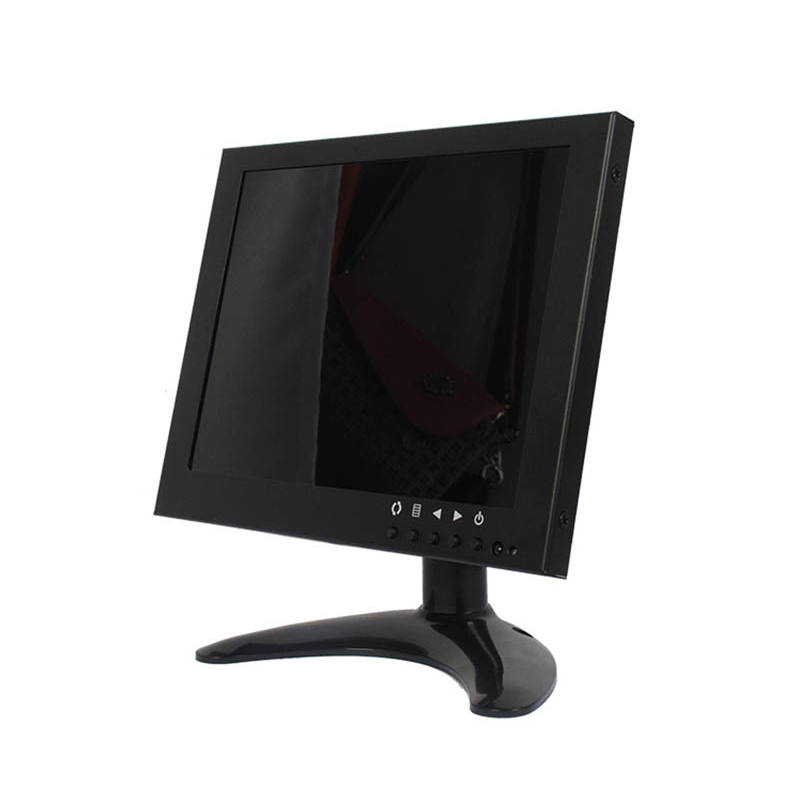Tech
External Pen Test: What It Is and Why Your Business Needs One

External pen testing, also known as external penetration testing, is a type of security testing that simulates an attack on a company’s external-facing systems and applications. The goal of external pen testing is to identify vulnerabilities that an attacker could exploit to gain unauthorized access to sensitive data or systems. This type of testing is typically performed by a team of security professionals who use a variety of tools and techniques to identify and exploit vulnerabilities.
External pen testing is an important part of any comprehensive security program. It provides organizations with valuable insights into their security posture and helps identify areas where improvements can be made. By identifying vulnerabilities before they can be exploited by attackers, external pen testing can help prevent data breaches and other security incidents. However, it’s important to note that external pen testing is just one part of a larger security program and should be used in conjunction with other security measures, such as firewalls, intrusion detection systems, and employee training.
External Pen Test Overview
External Penetration Testing is a critical component of any organization’s security posture. It is a process of testing the security of an organization’s external-facing systems, including web applications, networks, and servers. In this section, we will provide an overview of External Penetration Testing, including its objectives and goals, scope of testing, and types of External Pen Tests.
Objectives and Goals
The primary objective of an External Pen Test is to identify vulnerabilities in an organization’s external-facing systems that could be exploited by attackers. The goal is to identify weaknesses in the security controls that could lead to unauthorized access, data breaches, or other security incidents. The testing should be designed to simulate real-world attacks and provide actionable recommendations to improve the security posture of the organization.
Scope of Testing
The scope of External Pen Testing should be clearly defined before the testing begins. The scope should include all external-facing systems, including web applications, networks, and servers. It should also include any third-party services or applications that are used by the organization. The testing should be conducted from the perspective of an external attacker, simulating attacks that could be launched from the internet.
Types of External Pen Tests
There are several types of External Pen Tests, including Black Box, Gray Box, and White Box testing. Black Box testing is conducted without any knowledge of the internal workings of the system. Gray Box testing is conducted with limited knowledge of the system, such as user accounts or network diagrams. White Box testing is conducted with full knowledge of the system, including access to source code or other sensitive information.
In conclusion, External Pen Testing is an essential component of any organization’s security program. It is a process of testing the security of external-facing systems to identify vulnerabilities that could be exploited by attackers. The testing should be designed to simulate real-world attacks and provide actionable recommendations to improve the security posture of the organization.
Execution and Reporting
Testing Methodologies
External penetration testing is an important process that involves a variety of testing methodologies. The first step in executing an external pen test is to identify the scope of the testing. This includes defining the targets, the testing methods, and the timeline for the testing process. The pen tester should also ensure that the testing is conducted in a safe and secure environment, and that the testing does not cause any harm to the target systems.
The most common testing methodologies used in external pen testing include vulnerability scanning, network mapping, and manual testing. Vulnerability scanning involves using automated tools to scan the target systems for known vulnerabilities. Network mapping involves identifying the network topology and the devices connected to the network. Manual testing involves using custom scripts and manual techniques to identify vulnerabilities that cannot be detected by automated tools.
Vulnerability Analysis
Once the testing is complete, the pen tester should analyze the results to identify vulnerabilities and potential security risks. This involves prioritizing the vulnerabilities based on their severity and the potential impact on the target systems. The pen tester should also provide recommendations for remediation and mitigation of the identified vulnerabilities.
Reporting and Feedback
The final step in the external pen testing process is to provide a detailed report to the client. The report should include a summary of the testing methods used, the vulnerabilities identified, and the recommended remediation and mitigation steps. The report should also include a detailed analysis of the potential impact of the vulnerabilities on the target systems.
The pen tester should provide feedback to the client on the effectiveness of the testing process and the overall security posture of the target systems. The feedback should be clear and concise, and should provide recommendations for improving the security posture of the target systems. The pen tester should also be available to answer any questions and provide additional support as needed.
Tech
8 Inch CCTV Monitor with BNC: The Ultimate Guide to Choosing the Right Monitor for Your Security System

An 8 inch CCTV monitor with BNC is an essential tool for security surveillance systems. It is a compact and portable device that provides clear and detailed images of the monitored area. The BNC connector is commonly used for transmitting video signals in CCTV systems, ensuring a stable and reliable connection.
The 8 inch size of the monitor is ideal for small to medium-sized surveillance systems, where space is limited. It can be easily mounted on a wall or placed on a desk, providing flexibility in installation. The high-resolution display ensures that every detail is captured, allowing for accurate identification of people and objects in the monitored area.
Overall, an 8 inch CCTV monitor with BNC is a valuable addition to any security surveillance system. It provides clear and detailed images, is easy to install, and is compatible with most CCTV systems. Its compact size and portability make it a convenient option for monitoring small to medium-sized areas.
Features and Specifications
Screen Size and Resolution
The 8 inch CCTV monitor with BNC offers a clear and crisp display with a resolution of 800×600 pixels. The screen size is ideal for monitoring security footage and provides a good balance between portability and visibility.
Connectivity Options
The monitor comes with a BNC input, which is a standard connector used in CCTV cameras. This makes it easy to connect the monitor to a wide range of security cameras without the need for additional adapters or converters. In addition, it also has a VGA input, which allows it to be connected to a computer or laptop.
Build Quality and Design
The 8 inch CCTV monitor with BNC has a sturdy and durable build quality, which makes it suitable for use in both indoor and outdoor environments. It features a compact and lightweight design, which makes it easy to transport and set up. The monitor also comes with a built-in stand that allows it to be placed on a flat surface without the need for additional mounting hardware.
Overall, the 8 inch CCTV monitor with BNC is a reliable and versatile option for monitoring security footage. Its high-quality display, multiple connectivity options, and durable build quality make it a great choice for both personal and professional use.
Installation and Compatibility
Mounting and Setup
The 8 inch CCTV monitor with BNC is designed for easy installation and setup. It comes with a mounting bracket that allows for easy attachment to a wall or surface. The bracket is adjustable, which means that the monitor can be positioned at the perfect angle for optimal viewing.
Once the monitor is mounted, it is easy to set up. Simply connect the power cable to an outlet and the monitor will turn on. The monitor also comes with a remote control, which makes it easy to adjust settings such as brightness, contrast, and color.
BNC Connection and Signal Quality
The 8 inch CCTV monitor with BNC is compatible with a wide range of CCTV cameras that use BNC connectors. The BNC connector provides a secure and stable connection, which ensures that the signal quality is high.
To connect the monitor to a CCTV camera, simply plug the BNC cable into the BNC input on the back of the monitor. The monitor will automatically detect the signal and display the video feed. The signal quality is excellent, with sharp and clear images that are easy to see.
Overall, the 8 inch CCTV monitor with BNC is an excellent choice for anyone who needs a high-quality monitor for their CCTV system. It is easy to install, easy to set up, and provides excellent signal quality.
Tech
Hire Dedicated Developers in India: The Best Choice for Your Business Growth

Hiring dedicated developers in India has become an increasingly popular trend in recent years. With the rise of technology and the need for businesses to stay competitive, outsourcing to India has become a cost-effective solution for many companies. India has a large pool of talented developers who are skilled in a variety of programming languages and technologies, making it an attractive destination for businesses looking to hire dedicated developers.
One of the main advantages of hiring dedicated developers in India is the cost savings. The cost of living in India is lower than in many other countries, which means that salaries for developers are also lower. This allows businesses to hire skilled developers at a fraction of the cost of hiring in-house developers. Additionally, many Indian developers are willing to work for lower salaries in exchange for the opportunity to work on challenging projects and gain valuable experience.
Another advantage of hiring dedicated developers in India is the availability of a large talent pool. India has a robust education system that produces a large number of highly skilled developers each year. This means that businesses have access to a wide range of talented developers with expertise in various programming languages and technologies. With such a large talent pool, businesses can easily find developers who have the skills and experience necessary to complete their projects on time and within budget.
Benefits of Hiring Dedicated Developers in India
Cost-Effectiveness
One of the primary benefits of hiring dedicated developers in India is cost-effectiveness. Compared to hiring developers in the US or Europe, the cost of hiring developers in India is significantly lower. This is because of the difference in the cost of living and the value of the currency. Companies can save up to 60% of their development costs by hiring dedicated developers in India.
Access to a Large Talent Pool
India has a large pool of talented developers with diverse skill sets and experience levels. By hiring dedicated developers in India, companies can access this talent pool and find developers with the specific skills and experience they need for their projects. This allows companies to build high-quality software products and services that meet their business needs.
Flexible Engagement Models
Hiring dedicated developers in India provides companies with flexible engagement models. Companies can choose to hire developers on a full-time or part-time basis, depending on their project requirements. This allows companies to scale their development teams up or down as needed, without the need for long-term commitments.
Focus on Core Business Activities
By outsourcing development tasks to dedicated developers in India, companies can focus on their core business activities. This allows companies to allocate their resources and time to their core business activities, such as marketing, sales, and customer service. This helps companies to grow their business and stay competitive in their respective markets.
Overall, hiring dedicated developers in India provides companies with cost-effective, flexible, and talented resources that can help them build high-quality software products and services.
How to Hire Dedicated Developers in India
Identifying Your Project Requirements
Before hiring dedicated developers in India, it is important to identify your project requirements. This includes defining the scope of your project, determining the technology stack, and outlining the skills and experience required for the developers. By having a clear understanding of your project requirements, you can ensure that you hire developers who are the right fit for your project.
Selecting the Right Vendor
When hiring dedicated developers in India, it is important to select the right vendor. Look for a vendor who has experience working with clients in your industry and who can provide references from previous clients. Additionally, consider the vendor’s communication skills, project management processes, and pricing structure to ensure that they are a good fit for your project.
Evaluating Technical Expertise
When hiring dedicated developers in India, it is important to evaluate their technical expertise. Look for developers who have experience working with the technology stack required for your project and who have a strong portfolio of previous work. Additionally, consider conducting technical interviews or coding tests to ensure that the developers have the skills and experience required for your project.
Understanding Cultural Fit
When hiring dedicated developers in India, it is important to understand cultural fit. Cultural differences can impact communication, project management, and work style. Look for developers who have experience working with clients from your country and who have a good understanding of your culture. Additionally, consider conducting cultural interviews to ensure that the developers are a good fit for your project.
By following these guidelines, you can hire dedicated developers in India who are the right fit for your project and who can help you achieve your goals.
Tech
Creative Multimedia Company in India: Innovating the Digital Landscape

A creative multimedia company in India is a company that specializes in creating and producing multimedia content that is both engaging and informative. These companies use a variety of mediums, including video, audio, graphics, and animation, to create content that is visually appealing and engaging for their clients’ target audience. With the rise of digital marketing and the increasing demand for multimedia content, creative multimedia companies in India have become an essential part of the marketing industry.
Creative multimedia companies in India offer a wide range of services to their clients, including video production, animation, graphic design, and web development. These companies work closely with their clients to understand their goals and objectives and create content that aligns with their brand and message. They use their expertise in multimedia production to create content that is not only visually appealing but also effective in achieving their clients’ marketing objectives. With a focus on creativity and innovation, these companies are constantly pushing the boundaries of what is possible in multimedia production.
Overview of the Creative Multimedia Industry in India
Growth and Evolution
The creative multimedia industry in India has witnessed significant growth and evolution in recent years. The industry has become a key contributor to the Indian economy, generating employment opportunities and revenue. The industry has evolved from being a small niche market to a mainstream industry, catering to diverse sectors such as advertising, entertainment, education, and gaming.
The growth of the industry can be attributed to several factors, including the availability of skilled labor, advancements in technology, and favorable government policies. The industry has also witnessed a shift towards digital platforms, with an increasing number of consumers preferring online content.
Key Market Players
The creative multimedia industry in India is highly competitive, with several key market players operating in the industry. These include large multinational corporations as well as small and medium-sized enterprises. Some of the key players in the industry include Reliance Entertainment, Prime Focus, and Tata Elxsi.
These market players offer a range of services, including animation, visual effects, game development, and post-production services. They also cater to a range of clients, including domestic and international clients.
Industry Challenges
Despite the growth and evolution of the creative multimedia industry in India, the industry faces several challenges. One of the major challenges faced by the industry is the lack of standardization and quality control. There is also a shortage of skilled labor in the industry, which has resulted in high labor costs.
Another challenge faced by the industry is the lack of infrastructure and support from the government. The industry requires significant investment in technology and infrastructure, which is often not available.
In conclusion, the creative multimedia industry in India has witnessed significant growth and evolution in recent years. However, the industry faces several challenges that need to be addressed to ensure its sustained growth and success.
Services Offered by Creative Multimedia Companies
Creative multimedia companies in India offer a wide range of services to cater to the needs of their clients. These services are designed to help businesses enhance their brand image, engage with their target audience, and achieve their marketing goals. Here are some of the services offered by creative multimedia companies in India:
Animation and Visual Effects
Animation and visual effects are essential components of multimedia content. Creative multimedia companies in India offer 2D and 3D animation services, motion graphics, and visual effects to create engaging and interactive content. These services are used in various industries, including advertising, film, television, gaming, and e-learning.
Graphic Design and Branding
Graphic design and branding services are crucial for businesses to establish a unique identity and stand out in the market. Creative multimedia companies in India offer logo design, brochure design, packaging design, and other branding services to help businesses create a strong brand image. These services are designed to capture the essence of a brand and communicate its values effectively.
Web Design and Development
Web design and development services are essential for businesses to create a robust online presence. Creative multimedia companies in India offer responsive web design, e-commerce website development, and other web-related services. These services are designed to create user-friendly and visually appealing websites that attract and retain visitors.
Video Production and Editing
Video production and editing services are essential for businesses to create engaging and informative video content. Creative multimedia companies in India offer video production, post-production, and editing services to help businesses create high-quality videos for various purposes, including marketing, training, and entertainment.
Interactive Applications
Interactive applications are becoming increasingly popular among businesses to engage with their target audience. Creative multimedia companies in India offer interactive applications, including mobile apps, web apps, and games, to help businesses create immersive and interactive experiences for their users.
In conclusion, creative multimedia companies in India offer a wide range of services to help businesses enhance their brand image, engage with their target audience, and achieve their marketing goals. These services are designed to create high-quality and engaging multimedia content that stands out in the market.
-

 Tech11 months ago
Tech11 months agoExpotab.com Login: How to Access Your Account
-

 Home & Garden10 months ago
Home & Garden10 months agoWood Accent Wall: How to Install and Style One in Your Home
-

 Health11 months ago
Health11 months agoOCD Therapist: How to Find the Right One for You
-

 Health11 months ago
Health11 months agoWellHealthOrganic Buffalo Milk Tag: The Benefits of Drinking Organic Milk
-

 Home & Garden11 months ago
Home & Garden11 months agoBasement Services Toronto: Expert Solutions for Your Home’s Lower Level
-

 Tech11 months ago
Tech11 months agoModyukle: A Comprehensive Guide to Understanding
-

 Blog11 months ago
Blog11 months agoAndre Hakkak Net Worth: A Look at the Successful Entrepreneur’s Wealth
-

 Tech11 months ago
Tech11 months agoNetwyman Blogs: A Comprehensive Guide to the Best Tech Blogs Online





